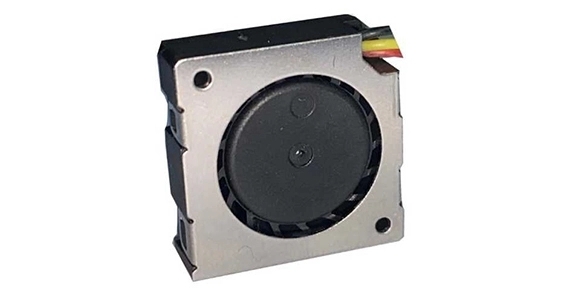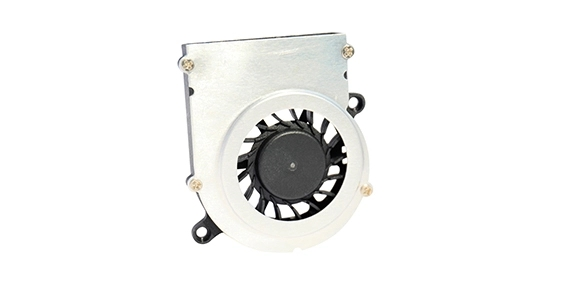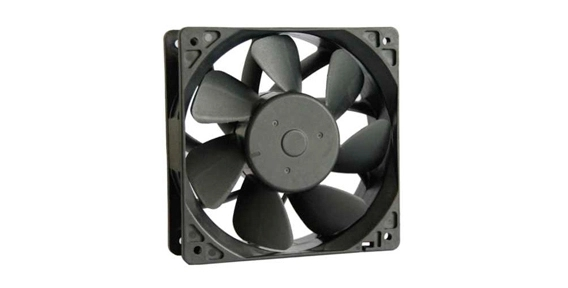Efficient cooling is paramount in data centers where high-density computing and constant operation can generate substantial heat. DC blower fans, with their versatile design, emerge as key players in implementing effective cooling strategies. This exploration delves into the intricacies of cooling strategies using DC blower fans in data centers, highlighting their advantages over traditional axial cooling fans.
The Dynamics of DC Blower Fans in Data Center Cooling
Data centers, housing numerous servers and electronic components, demand sophisticated cooling solutions to maintain optimal operating temperatures. DC blower fans, with their radial airflow design, prove instrumental in addressing the challenges posed by high-density server racks. The ability of DC blower fans to generate focused and directed airflow makes them well-suited for precision cooling in the confined spaces of data center environments.
Unlike traditional axial cooling fans, DC blower fans excel in scenarios where airflow needs to be channeled directly to heat-generating components. The versatility of DC blower fans in adapting to the specific thermal demands of data center equipment positions them as an essential component in modern data center cooling strategies.

DC Blower Fan: Tailoring Airflow to Server Racks
In data centers, where server racks vary in heat generation, zonal cooling emerges as an effective strategy. DC blower fans play a pivotal role in this approach by allowing for precise control over airflow in specific zones. By strategically placing DC blower fans in proximity to high-heat server racks, data center operators can ensure that cooling is directed precisely where it's needed.
The axial cooling fan, with its dispersed airflow pattern, may struggle to achieve the same level of zonal control as DC blower fans. The directed radial airflow of DC blower fans enables efficient cooling in targeted areas, optimizing the overall thermal management of the data center.

Rack-Level Cooling: Enhancing Efficiency with DC Blower Fans
Data centers often adopt a rack-level cooling strategy to address localized heat generation. DC blower fans are well-suited for this approach as they can be integrated directly into server racks to provide focused and efficient cooling. This method enhances cooling efficiency by minimizing the distance air needs to travel, ensuring rapid heat dissipation.
In contrast, axial cooling fans, typically installed at the rear of server racks, may face challenges in achieving the same level of localized cooling efficiency as DC blower fans. The ability to incorporate DC blower fans within the rack structure allows for a more streamlined and targeted cooling solution, optimizing the thermal performance of individual servers.
DC Blower Fan: Adapting to Variable Workloads
Data center workloads can vary significantly, resulting in fluctuating heat loads. DC blower fans equipped with dynamic speed control mechanisms offer a responsive solution to these variations. By adjusting fan speed based on real-time thermal conditions and server workloads, DC blower fans optimize energy efficiency and cooling effectiveness.
The axial cooling fan, operating at a fixed speed, may struggle to match the adaptability of DC blower fans in dynamically adjusting to changing thermal demands. In data centers where workloads are variable, the ability to fine-tune fan speed positions DC blower fans as a superior choice in achieving efficient and responsive cooling solutions.
When implementing cooling strategies in data centers, several considerations come into play. Factors such as the layout of server racks, the heat distribution within the data center, and energy efficiency goals influence the choice of cooling solutions. DC blower fans, with their adaptability, zonal cooling capabilities, and dynamic speed control, offer a comprehensive approach to addressing the unique challenges posed by data center environments.
In conclusion, cooling strategies utilizing DC blower fans in data centers showcase the versatility and precision these fans bring to the realm of electronic cooling. The directed airflow, zonal control, and dynamic speed adjustments make DC blower fans a strategic choice in optimizing the thermal performance of data center infrastructure. As the demand for computing power continues to rise, the role of DC blower fans in shaping efficient and effective data center cooling strategies becomes increasingly pivotal.

 EN
EN 

 +
+
 +
+
 +
+



